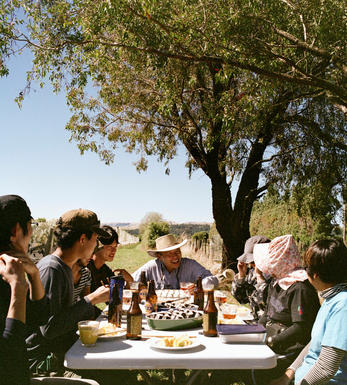
2011 Kusuda Wines, Pinot Noir, Martinborough, New Zealand

Critics reviews
Jancis Robinson - jancisrobinson.com - 16-Sept-2013
About this WINE

Kusuda Wines
Tokyo-born Hiroyuki (known as Hiro) Kusuda trained as a lawyer and worked for Fujitsu, then the Consulate General of Japan in Sydney before throwing it all up to pursue his other love, wine and winemaking. He went to Germany, learned the language, enrolled at Geisenheim and then emigrated to New Zealand to pursue both the Riesling and Pinot grapes – to which a third challenge, Syrah, has now been added. The choice of New Zealand in general and Martinborough in particular apparently came about through tasting the 1992 Ata Rangi Pinot Noir.
Obviously the main market for Kusuda is Japan, where they have developed a cult following, and indeed whence comes the volunteer labour force at harvest time when every grape is rigorously checked before making the cut. Hiro Kusuda is meticulous to an almost fanatical degree, but it explains the exceptional quality and amazing precision of his wines. The Kusuda Pinot Noir was one of the standout wines at the 2013 Pinot Noir Celebration in Wellington, NZ.

Martinborough
Close to the southern tip of North Island, some top-class, aromatic Pinot Noir is being made in the sleepy town of Martinborough, with the best rivalling good Burgundy. Compared to the hustle and bustle of Marlborough, the pocket-sized Wairarapa district – with Martinborough at its head – comes across less as a wine-producing region, accounting as it does for three-point-five percent of the country's vines, and more like a cottage industry. Much of this is perhaps down to the compact size of its favoured old-Martinborough terrace with its gravely, sandy, alluvial soils, located an hour's drive east of the country's capital, Wellington.
Another factor is the nature of the winegrowers themselves, often holding down a professional career during the week, and tending their vines at the weekends; so more therapy than husbandry, reflected perhaps in the relatively high land values, making commercial viticulture a tricky proposition. Added to which, and despite being in a rain shadow, this south-eastern corner of North Island is constantly at the mercy of the icy south-easterlies spinning off the Antarctic, bringing frosts five or six times a year, from flowering through to harvest. Pinot Noir yields are therefore often at the 25-30 hl/ha mark.
Just as Cloudy Bay launched a hundred wineries in Marlborough, so it could be argued that Dry River Wines and Ata Rangi provided the spark that lit up Martinborough. While the region's history dates back to the first commercial vintage of 1893, Prohibition intervened, followed by Marlborough's debut, hence Dry River's inaugural vintage was only in 1979, with Clive Paton releasing Ata Rangi in 1985.
Much of the initial buzz surrounding the region came from the Abel or `Gumboot' clone of Pinot Noir whose origins apparently lie in a certain Romanée-Conti vineyard. During the 1960s or 1970s, a cutting was allegedly smuggled into New Zealand via a gumboot, discovered by the then customs officer Malcolm Abel who in turn propagated it on the quiet before releasing it to Ata Rangi. To this day, one sniff of a barrel of Abel Pinot Noir conjures up visions of Musigny – something evidently not lost on Nigel Greening, who planted most of his Cornish Point vineyard with it.
Though Pinot Noir put the region on the map and continues to turn heads in the hands of Dr Neil McCallum (Dry River), Clive Paton (Ata Rangi), and, more recently, Chris Archer of Alana Estate, economically the region is arguably better-suited to Sauvignon Blanc, Riesling and even Gewürztraminer. Unlike Marlborough, or Burgundy for that matter, this region has to juggle several varieties to make ends meet – not an easy task. The regional style is dark plum and chocolate black fruit, with a savouriness akin to meat.

Pinot Noir
Pinot Noir is probably the most frustrating, and at times infuriating, wine grape in the world. However when it is successful, it can produce some of the most sublime wines known to man. This thin-skinned grape which grows in small, tight bunches performs well on well-drained, deepish limestone based subsoils as are found on Burgundy's Côte d'Or.
Pinot Noir is more susceptible than other varieties to over cropping - concentration and varietal character disappear rapidly if yields are excessive and yields as little as 25hl/ha are the norm for some climats of the Côte d`Or.
Because of the thinness of the skins, Pinot Noir wines are lighter in colour, body and tannins. However the best wines have grip, complexity and an intensity of fruit seldom found in wine from other grapes. Young Pinot Noir can smell almost sweet, redolent with freshly crushed raspberries, cherries and redcurrants. When mature, the best wines develop a sensuous, silky mouth feel with the fruit flavours deepening and gamey "sous-bois" nuances emerging.
The best examples are still found in Burgundy, although Pinot Noir`s key role in Champagne should not be forgotten. It is grown throughout the world with notable success in the Carneros and Russian River Valley districts of California, and the Martinborough and Central Otago regions of New Zealand.


Buying options
Add to wishlist
Description
Pale Pinot with brilliant purity. Rose petals, perfectly toasted oak, great length. This is a slender but utterly gorgeous Pinot with the brilliant meticulous character of Kusuda. It wasn’t an easy year in Martinborough but Hiro Kusuda has delivered a remarkably stylish wine.
Hiroyuki Kusuda has won critical acclaim internationally for his range of wines made in the well-established wine-producing region of Martinborough, east of Wellington. Kusuda has built a reputation for terroir-driven, pure, elegant Pinot Noirs. His wine-making is characterised by painstakingly careful sorting of the fruit, to the point that he personally inspects the harvested grapes one by one and sorts out any berries that are unripe or showing the slightest damage. The production is miniscule 3,000-4,000 bottles of Pinot Noir every year, of which the majority is exported to Japan and almost everything else is offered in New Zealand and Australia. Berrys is fortunate in this respect to be able to secure an allocation for these highly-rated, rare wines.
The 2011 vintage comes from 100% destemmed grapes, that have been fermented in open stainless steel vats with pumping-over and hand plunging, and macerated for 23 to 25 days. Aged in French (22% new) oak barriques for 17 months. Unfined and bottled with coarse filtration.
wine at a glance
Delivery and quality guarantee